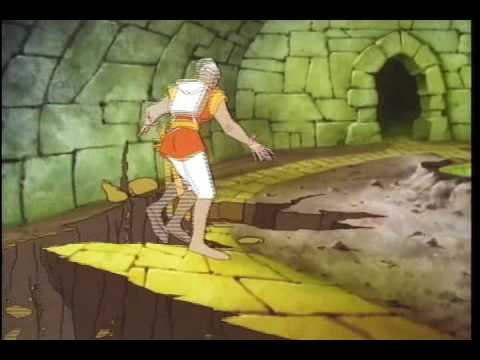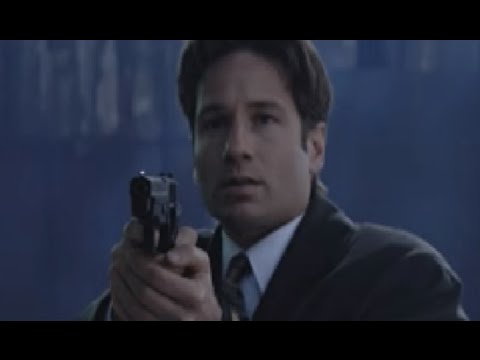Though not gaming’s best innovation, many consoles of the early 1990s (such as 3DO, Philips CD-i, and Sega CD) had dedicated major portions of their software libraries to this trend. Sony would eventually wipe them all out with the first PlayStation, when computer-generated 3D would finally prove itself as flexible and viable game space. Yet for a time, there is no denying the most “real” gaming was accredited to FMV titles, and these titles (in no particular order) tried to push the boundaries in some form or another.
Having debuted in the arcades in 1990, the Wild West inspired Mad Dog McCree was a light gun game that placed you in the role of “The Stranger”, who arrived in town to save the Mayor’s daughter from the notorious Mad Dog. Actors portraying various outlaws would pop out from behind random objects on a stationary screen, a la Nintendo’s Duck Hunt, but with cowboys. For many gaming enthusiasts, the low grade acting chops and cheesy lines (not to mention cold teasing of the undertaker each time you failed) are the game’s most memorable traits. Mad Dog had a sequel, not to mention a few copycat off-shoots, which have seen various re-releases over the years (including a DVD video version you could play simply with a DVD remote). The title did, however, offer a legitimate test of reflexes on harder difficulties, although home ports that followed could be cheated in the same manner as Duck Hunt if you felt like standing 3 inches from your television and not even trying to aim.
Animated by Don Bluth of The Land Before Time fame, Dragon’s Lair made national news around its heyday for a truly original design concept. The full-motion cartoon video made it the first of its kind, and an inspiration on the genre’s core function. The saga unfolds continuously as the player watches, following the brave Dirk on his adventure to rescue a kidnapped princess. You are unable to liberally move the character as you would a Mario game, as only at specific “fork in the road” moments would the player be able to tap a direction at the correct prompt and affect Dirk’s fate. Hitting “right” instead of the correct “left” at a prompt, for example, could mean all the difference between Dirk jumping out of the way of a projectile or taking it right to the face. The game is notoriously difficult without advance knowledge of when and where to input the proper command. It was met with a sequel and its legacy extends beyond the video game community, albeit overshadowed by arcade legends such as Pac-man and Donkey Kong. Family Guy even took a crack at Dragon’s Lair during an intro sequence, where Peter claims he once nearly conquered the game, only to have a flashback which reveals his immediate failure towards the ending.
First and foremost, the acting in this title was not nearly as bad as Mad Dog McCree, although the slow mystery-based gameplay easily made the title more appropriate for older gamers, with a good enough PC running DOS to play it. Sherlock Holmes: Consulting Detective predates most of the games on this list, having arrived in 1990, and contains various elements of lie detection and evidence analyzation across three unique cases. To its credit, pieces of real life history are portrayed through the game’s footage, adding an educational value and helping the gameplay experience become a more immersive one, compared to some of the shooting-oriented FMV titles of the era.
A game like 1995’s Phantasmagoria simply would not exist on today’s market. The game’s fearless portrayal of life-like torture and dismemberment might put the polygonal shenanigans of Grant Theft Auto to shame and, unquestionably, make Phantasmagoria the most violent FMV game ever. The title took a page or two from the grindhouse filmmaking style pushed forth by horror godfathers like Hershell Gordon Lewis and, for these reasons, it had a cult following in the mid 1990s, despite poor critical reception. Interestingly, most of the game’s recorded fan base hails from Japan, where an exclusive box set was released towards the end of the decade. You could at least “move” yourself around a lot of the time in Phantasmagoria, as the onscreen character, Adrienne, was superimposed over backgrounds separately during most traveling sequences. Yet much of the gameplay came through prompts during cutscenes. The title is notable for having been pioneered by King’s Quest designer Roberta Williams, who cited the title as a defining game of her career. Due to technological limitations, Phantasmagoria spanned seven – that’s right, seven – CDROM discs at time of release.
This 1995 game took influence from Stargate-style storytelling and introduced fairly challenging puzzles to an otherwise expected formula of properly-timed prompts. Probably the biggest claim to recognition for The Dasdalous Encounter would be the starring role of Tia Carrere, who was fresh out of appearing in both Wayne’s World films. The game gets a nod for upping the acting standards of the genre, while the onscreen interface and direct-to-player dialogue was far more fluid and seamless than preceding FMV titles. However, even as such advancements were being made, the game arrived at the end of the 90s FMV craze, and was not a top seller.
The FMV wave had died and been put to rest by 1998, and yet Fox Interactive tried to revive the style that year with a licensed title in the form of The X-Files: The Game on PC and PlayStation. As with most FMV games, most of the game’s entertainment value is in viewing the performances of on-screen actors; surprisingly, the title included appearances by the hit TV show’s main actors, including David Duchovny and Gillian Anderson. Yet in terms of gameplay, it was still a matter of minor influence in between performances. Though real backdrops and items were filmed, the game at least adopted a point-and-click mechanism similar to the famous Myst franchise, which made for a slightly more fluid feeling of progress for what was largely an FMV game.
Stop laughing, that really is the name of the game. 1995’s Snow Job was an exclusive to the 3DO platform and basically played out like a bad detective porno, without the explicit sex scenes. The game is recalled for taking advantage of then-new technology, where still-photos could be taken side-to-side in a single area, and then patched together and bent on a 2D scroll, so it would look as though the area is surrounding the player as they panned. Real areas were photographed and make up the game entirely, while actors were frozen in these photos, only moving when the player clicked them to cutaway to a video.
Even more seamy than Snow Job, 1994’s Voyeur placed gamers in the seat of a private eye spying on corrupt white-collar folks involved in a political sabotage plot. This time, however, the tease of sexual content would deliver to perverse hopefuls, as the game, in fact, contained explicit nudity and sex scenes. In fact, no other PC game in the mainstream market had attempted something that brazen using real-life actors. Needless to say, Voyeur caused controversy in the early 1990s for its content when it was on public display at the Universal Studios City Walk in Hollywood, California, during promotions for the 3DO system. Retailers also removed the game when smothered with enough heat from outspoken critics.
This three-part game series was exclusive to the Sega CD, and to the surprise of many modern-day observers, included the likes of Mark Whalberg, Kris Kross and INXS. It was basically the same exact “game” released three times with different music, and yet not so much a “game” in that you have points to win or a story to finish. Basically, the Make My Video titles were baby steps for future Avid and Final Cut editors who had really cheesy taste in pop music. With a limited soundtrack from each artist, players selected between streaming clips of royalty free stock footage or performance video of the artist, and dropped them into a timeline as the song played along. Players could then watch their finished product accompanied by the remarks of various wise-cracking actors. Even more bizarre, the game had the gall to judge you on your editing skills, despite the limits of the hardware in question, most often claiming that you might have done well but could have done better in most outcomes.
Night Trap gets a bum wrap, even from non-gamers, mainly for its unabashed cheesiness and lame soundtrack. Yet in theory, the game’s concept isn’t all that bad, marred only by its repetitiveness. The title starred Dana Plato (yes, Diff’rent Strokes Dana Plato) and revolved around a vacation home in a remote location of the United States, that is actually owned by a family of blood-thirsty vampires in disguise. As a group of naive girls visit the house one night, you are tasked with observing through hidden cameras across a half-hour timeframe and trapping any lurking vampires as they prowl for the girls. The seemingly innocent teen-horror concept resulted in a well-known backlash during 1993, when the United States Senate held a hearing on violent video games and somehow hyped Night Trap as a prime offender of childhood innocence. Yet, no nudity or extreme gore is included in the game, which was mislabeled as “an effort to trap and kill women” (despite the fact that players are actually rescuing them) and other ludicrous claims were made to demonize the game and further an agenda of forcing rating labels on video games. The content was filmed in the late 1980s, but footage was locked away and would not be used for anything, until the game’s completion in 1992. Essentially, Night Trap takes the exact construct of Dragon’s Lair, but incorporates the concept with live action footage; you can’t do more than watch, and only trigger traps when a character has moved to the prompt. However, since the player could swap between the hidden cameras at any time, one could actually miss key dialogue and scenes happening in other rooms, and therefore was encouraged to replay the game from the start in order to see everything. This almost fixed the repetitious nature of the gameplay, but since only one story unfolded anyway, eventually desire to touch the game again was based on novelty purposes. Arguably modern technology could make an even more immersive and less restricting FMV game than the 20th century allowed, but the industry has moved in a different direction altogether and the rise of multiplayer focus makes the concept even more impossible to grasp in today’s market. Don’t hold your breath for a Night Trap remake on Blu-ray anytime soon.
























